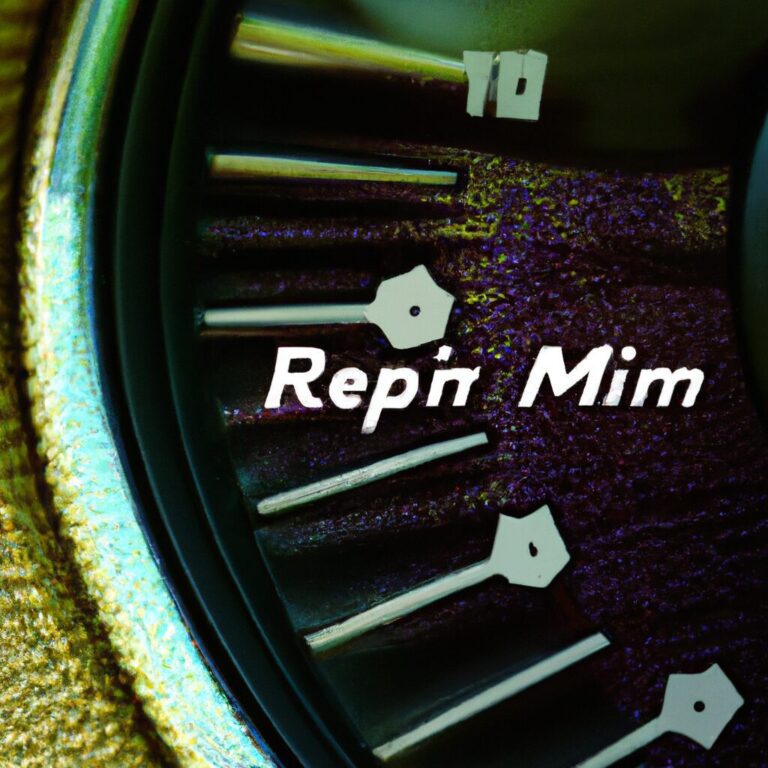how to remove red dye from diesel
Introduction
Removing red dye from diesel fuel can be a tricky process, but it is possible. Red dye is often added to diesel fuel to indicate that it is not intended for use in a vehicle, and it must be removed before the fuel can be used. In this guide, we will discuss the different methods for removing red dye from diesel fuel, including chemical treatments, filtration, and distillation. We will also discuss the safety precautions that should be taken when handling diesel fuel. With the right approach, you can safely and effectively remove red dye from diesel fuel.
How to Remove Red Dye from Diesel: A Step-by-Step Guide
Removing red dye from diesel fuel can be a tricky process, but it is possible with the right steps. Red dye is often added to diesel fuel to indicate that it is not intended for use in a motor vehicle, and must be removed before the fuel can be used. This guide will provide a step-by-step process for removing red dye from diesel fuel.
Step 1: Prepare the Fuel. Before attempting to remove the red dye, it is important to prepare the fuel. This includes ensuring that the fuel is free of any contaminants, such as water or dirt. If the fuel is contaminated, it should be filtered or treated before attempting to remove the dye.
Step 2: Add a Fuel Additive. Once the fuel is prepared, a fuel additive should be added to the fuel. This additive will help to break down the red dye molecules, making them easier to remove.
Step 3: Filter the Fuel. After the fuel additive has been added, the fuel should be filtered. This will help to remove any remaining red dye molecules from the fuel.
Step 4: Test the Fuel. After the fuel has been filtered, it should be tested to ensure that all of the red dye has been removed. If any red dye remains, the process should be repeated until the fuel is free of red dye.
Following these steps will help to ensure that the red dye is removed from the diesel fuel. It is important to note that this process may not be effective for all types of red dye, and it is best to consult a professional if the dye does not seem to be coming out.
The Benefits of Removing Red Dye from Diesel
The use of red dye in diesel fuel has been a common practice for many years. The dye is used to differentiate between diesel fuel and other types of fuel, such as gasoline, for taxation purposes. However, the use of red dye in diesel fuel has been found to have several drawbacks. Removing the red dye from diesel fuel can provide a number of benefits.
One of the primary benefits of removing red dye from diesel fuel is improved engine performance. The dye can cause a buildup of deposits in the fuel system, which can lead to clogged fuel injectors and other engine components. This can reduce engine performance and cause a decrease in fuel efficiency. Removing the dye can help to reduce these deposits and improve engine performance.
Another benefit of removing red dye from diesel fuel is improved fuel economy. The dye can cause a decrease in fuel economy due to the buildup of deposits in the fuel system. Removing the dye can help to reduce these deposits and improve fuel economy.
In addition, removing the red dye from diesel fuel can help to reduce emissions. The dye can cause an increase in emissions due to the buildup of deposits in the fuel system. Removing the dye can help to reduce these deposits and reduce emissions.
Finally, removing the red dye from diesel fuel can help to reduce the cost of fuel. The dye can cause an increase in fuel costs due to the additional taxes associated with its use. Removing the dye can help to reduce these taxes and reduce the cost of fuel.
In conclusion, removing the red dye from diesel fuel can provide a number of benefits, including improved engine performance, improved fuel economy, reduced emissions, and reduced fuel costs. For these reasons, many diesel fuel users are now opting to remove the red dye from their fuel.
What Causes Red Dye to Build Up in Diesel?
Red dye build-up in diesel fuel is a common problem that can be caused by a variety of factors. The most common cause of red dye build-up is the use of low-quality fuel. Low-quality fuel often contains contaminants such as dirt, water, and other impurities that can cause the red dye to accumulate in the fuel. Additionally, the use of fuel additives can also cause red dye build-up. Fuel additives are designed to improve the performance of the fuel, but they can also cause the red dye to accumulate in the fuel.
Another cause of red dye build-up is the improper storage of diesel fuel. Diesel fuel should be stored in a cool, dry place to prevent the red dye from accumulating. If the fuel is stored in a warm, humid environment, the red dye can accumulate more quickly. Additionally, if the fuel is stored for an extended period of time, the red dye can accumulate due to oxidation.
Finally, red dye build-up can also be caused by the use of contaminated fuel filters. If the fuel filter is not changed regularly, it can become clogged with dirt and other contaminants, which can cause the red dye to accumulate in the fuel.
Red dye build-up in diesel fuel can be a serious problem, as it can cause engine damage and reduce fuel efficiency. To prevent red dye build-up, it is important to use high-quality fuel, store the fuel properly, and change the fuel filter regularly.
How to Avoid Red Dye Buildup in Diesel
Diesel fuel is a common fuel source for many vehicles, but it can be prone to red dye buildup. This buildup can cause clogs in fuel filters and other components, leading to costly repairs and downtime. Fortunately, there are steps you can take to avoid red dye buildup in diesel fuel.
First, it is important to use only high-quality diesel fuel. Low-quality fuel can contain contaminants that can lead to red dye buildup. Additionally, it is important to regularly check and replace fuel filters. Clogged filters can cause fuel to back up and lead to red dye buildup.
It is also important to keep fuel tanks clean and free of debris. Debris can cause fuel to become contaminated, leading to red dye buildup. Additionally, it is important to keep fuel tanks full. This will help prevent condensation from forming in the tank, which can lead to red dye buildup.
Finally, it is important to use fuel additives. Fuel additives can help keep fuel clean and free of contaminants that can lead to red dye buildup. Additionally, fuel additives can help keep fuel tanks clean and free of debris.
By following these steps, you can help avoid red dye buildup in diesel fuel. This will help keep your vehicle running smoothly and reduce the risk of costly repairs.
The Best Methods for Removing Red Dye from Diesel
Removing red dye from diesel fuel can be a difficult task, but it is possible with the right methods. Red dye is often added to diesel fuel to indicate that it is not intended for use in vehicles on public roads. This dye is usually added to fuel that is intended for off-road use, such as in agricultural or construction equipment.
The most effective method for removing red dye from diesel fuel is to use a fuel filter. This filter should be designed specifically for removing dye from fuel, and it should be installed in the fuel line between the fuel tank and the engine. The filter will trap the dye particles, preventing them from entering the engine. It is important to regularly check and replace the filter to ensure that it is working properly.
Another method for removing red dye from diesel fuel is to use a fuel additive. These additives are designed to break down the dye molecules, allowing them to be filtered out of the fuel. It is important to use the correct type of additive for the fuel being used, as some additives may not be compatible with certain types of fuel.
Finally, it is possible to remove red dye from diesel fuel by using a centrifuge. This device spins the fuel at high speeds, causing the dye particles to separate from the fuel. The dye particles can then be filtered out of the fuel, leaving it free of dye.
No matter which method is used, it is important to ensure that all of the dye is removed from the fuel. If any dye remains in the fuel, it can cause damage to the engine and other components. It is also important to follow the manufacturer’s instructions when using any of these methods, as improper use can cause further damage.
The Pros and Cons of Using Chemical Additives to Remove Red Dye from Diesel
The use of chemical additives to remove red dye from diesel fuel has become increasingly popular in recent years. While this method can be effective in removing the dye, it is important to consider both the pros and cons of using chemical additives before making a decision.
Pros
One of the main advantages of using chemical additives to remove red dye from diesel fuel is that it is a relatively inexpensive and straightforward process. Chemical additives are readily available and can be easily added to the fuel tank. Additionally, the process is relatively quick and can be completed in a matter of minutes.
Another benefit of using chemical additives is that they are generally safe and non-toxic. This means that they will not cause any harm to the environment or to the people who come into contact with the fuel.
Finally, chemical additives are effective in removing the red dye from diesel fuel. This means that the fuel will be free of the dye and will be safe to use.
Cons
One of the main drawbacks of using chemical additives to remove red dye from diesel fuel is that they can be corrosive. This means that they can cause damage to the fuel tank and other components of the vehicle. Additionally, the additives can also cause damage to the fuel injectors and other parts of the engine.
Another potential downside of using chemical additives is that they can be difficult to remove from the fuel tank. This means that they can remain in the fuel tank and cause problems in the future.
Finally, chemical additives can be expensive. This means that they may not be a cost-effective solution for removing the red dye from diesel fuel.
In conclusion, while chemical additives can be an effective way to remove red dye from diesel fuel, it is important to consider both the pros and cons before making a decision. By weighing the advantages and disadvantages, you can make an informed decision about whether or not this method is right for you.
How to Tell if Red Dye Has Been Removed from Diesel
Determining whether red dye has been removed from diesel fuel can be a difficult task. However, there are a few methods that can be used to help identify if the red dye has been removed.
The first method is to visually inspect the fuel. If the fuel appears to be a light yellow or clear color, then it is likely that the red dye has been removed. Additionally, if the fuel has a strong odor, this could also be an indication that the red dye has been removed.
The second method is to use a spectrophotometer. This device measures the amount of light that is absorbed by the fuel. If the fuel absorbs a large amount of light, then it is likely that the red dye has been removed.
The third method is to use a gas chromatograph. This device measures the amount of hydrocarbons in the fuel. If the fuel contains a high amount of hydrocarbons, then it is likely that the red dye has been removed.
Finally, the fourth method is to use a refractometer. This device measures the refractive index of the fuel. If the refractive index is higher than normal, then it is likely that the red dye has been removed.
By using one or more of these methods, it is possible to determine if the red dye has been removed from diesel fuel. It is important to note, however, that these methods are not foolproof and should be used in conjunction with other methods to ensure accuracy.
The Most Common Mistakes People Make When Removing Red Dye from Diesel
1. Not using the correct type of fuel dye remover: Different types of fuel dye removers are available on the market, and it is important to use the correct type for the job. Some fuel dye removers are designed specifically for removing red dye from diesel, while others are designed for other types of fuel.
2. Not using enough fuel dye remover: It is important to use the correct amount of fuel dye remover for the job. If too little is used, the red dye may not be completely removed.
3. Not allowing enough time for the fuel dye remover to work: Fuel dye removers need time to work, and it is important to allow enough time for the product to do its job. If the fuel dye remover is not given enough time to work, the red dye may not be completely removed.
4. Not using the correct type of filter: It is important to use the correct type of filter when removing red dye from diesel. Some filters are designed specifically for removing red dye, while others are designed for other types of fuel.
5. Not changing the filter regularly: It is important to change the filter regularly when removing red dye from diesel. If the filter is not changed regularly, the red dye may not be completely removed.
6. Not using the correct type of fuel: It is important to use the correct type of fuel when removing red dye from diesel. Some fuels are designed specifically for removing red dye, while others are designed for other types of fuel.
Q&A
1. What is the best way to remove red dye from diesel?
The best way to remove red dye from diesel is to use a fuel filter that is specifically designed to remove the dye. This type of filter will be able to capture the dye particles and prevent them from entering the fuel system. Additionally, it is important to use a fuel additive that is designed to break down the dye molecules and help them to be filtered out.
2. Is it possible to remove red dye from diesel without a filter?
Yes, it is possible to remove red dye from diesel without a filter. This can be done by using a fuel additive that is designed to break down the dye molecules and help them to be filtered out. Additionally, it is important to use a fuel additive that is designed to prevent the dye from sticking to the fuel system components.
3. What are the risks of not removing red dye from diesel?
The risks of not removing red dye from diesel include clogged fuel filters, reduced fuel efficiency, and increased emissions. Additionally, the dye can cause corrosion and damage to fuel system components, leading to costly repairs.
4. How often should I change my fuel filter if I am using it to remove red dye from diesel?
It is recommended to change your fuel filter every 3,000 miles or every 6 months, whichever comes first. This will ensure that the filter is able to capture the dye particles and prevent them from entering the fuel system.
5. What type of fuel filter should I use to remove red dye from diesel?
It is important to use a fuel filter that is specifically designed to remove the dye. This type of filter will be able to capture the dye particles and prevent them from entering the fuel system.
6. Are there any other methods for removing red dye from diesel?
Yes, there are other methods for removing red dye from diesel. These include using a fuel additive that is designed to break down the dye molecules and help them to be filtered out, as well as using a fuel additive that is designed to prevent the dye from sticking to the fuel system components.
7. Is it safe to use a fuel additive to remove red dye from diesel?
Yes, it is safe to use a fuel additive to remove red dye from diesel. This type of additive is designed to break down the dye molecules and help them to be filtered out, as well as prevent the dye from sticking to the fuel system components.
8. What should I do if I am unable to remove the red dye from diesel?
If you are unable to remove the red dye from diesel, it is important to contact a professional for assistance. A professional will be able to inspect the fuel system and determine the best course of action for removing the dye.
Conclusion
Removing red dye from diesel can be a difficult task, but it is possible with the right tools and techniques. The most effective way to remove red dye from diesel is to use a fuel filter that is specifically designed to remove the dye. Additionally, using a fuel additive that is designed to break down the dye can also be effective. Finally, if the dye is still present after these methods, it may be necessary to use a fuel polishing system to completely remove the dye from the diesel.




